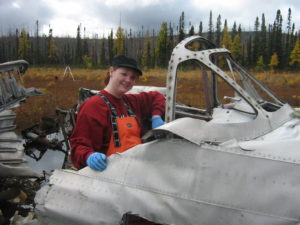
Inside A-20A 39-741 (FbCj-01) crashed 10 October 1942. This aircraft was being recovered by Underwater Admiralty Sciences and here I was investigating debris inside the remains of the cockpit. Photo by Robert Mester.
I may use the handle @PlaneCrashGirl, but when it comes to heritage, I am interested in much more than just aviation history. I like to think of myself as an explorer. Hunting for aircraft wreck sites certainly gives me an opportunity to venture to little known areas of the province and experience the untouched beauty that much of Newfoundland and Labrador still offers. Certainly, a crash site has been touched by human experience, whether tragic or a story of survival, but getting to the sites often take me through untouched, beautiful wilderness.
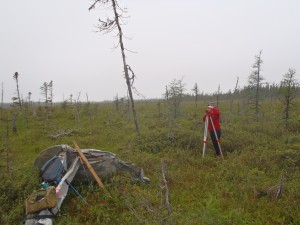
A whole lot of bog, dense trees, thick alders, and an approximation of the site location made accessing this RCAF Lodestar difficult. Photo by Kathleen Ellwood.
I started studying archaeology in my second year of university, looking to focus on physical anthropology. After my B.A. (hons.) in archaeology (physical anthropology) at Memorial University of Newfoundland, I went to Bournemouth University in the U.K. to focus my studies and earned an M.Sc. in Forensic and Biological Anthropology. I have always loved the personal stories that you can find from studying the human skeleton. When I returned to Newfoundland, I picked up an archaeology job working on an aircraft crash site. I took the position because the site still has three MIA American servicemen listed, and I thought my forensic anthropology background would be of use. On this site, we found the personal effects belonging to the ten men who died in that crash. Finding their clothing, keys, and even the pencils they used, added to the fact that the pilot’s son was interested in our findings, gave the site an importance I never understood before. When the excavation was finished, the lead archaeologist asked if I would be interested in working toward a Ph.D. in aviation archaeology at MUN.
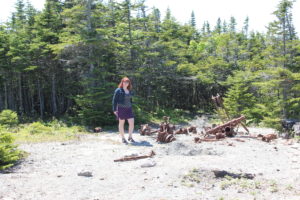
Visiting a USAAF C-54A (DaBr-01) on the Port-au-Port peninsula. I did not know about this site, but heels and a skirt will not stop me from making a (short) hike to a plane crash. Photo by Shannon K. Green.
For my Ph.D., I looked at some of the crash sites around Gander, Newfoundland. Gander was “the crossroads of the world” and thousands of aircraft passed through the airbase. I looked at a number of crash sites in the area, plus excavated some of the Former Townsite of Gander, particularly, the Globe Theatre. While working on my doctorate, I also worked on a couple of other sites around Newfoundland and Labrador, including some near Goose Bay and Stephenville, allowing me to start to develop methods for aviation archaeology in Newfoundland, and in some cases, have areas declared as archaeological sites and protected as such.

We found a lot of Coke bottle glass at The Globe in Gander, so decided to take a group shot of all of us enjoying Coca-Cola. Left to right: Dr. Mike Deal, Kathleen Ellwood, Chelsee Arbour, Lisa Daly and Shannon Green. Photo by Shannon K. Green.
I am continuing this work when time and finances allow, and hope to be able to visit and research as many aircraft crash sites, museums, and areas of historical importance as possible, around Newfoundland, Labrador, and if I can, beyond.
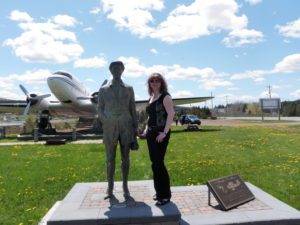
Visiting Amelia Earhart and the Spirit of Harbour Grace in Harbour Grace, Newfoundland. Photo by Shannon K. Green.
When not researching the aviation history of Newfoundland and Labrador, I work almost as a jack of all trades in heritage. I have been working as a tour guide since 2003 as a step-on guide with Wildland Tours. I have also worked at the Provincial Archives of Newfoundland and Labrador, as a bilingual interpreter with Parks Canada at Cape Spear and Signal Hill National Historic Sites of Canada. On a more academic front, I have worked as a researcher for the Grand Concourse Association and the Trail of the Caribou (plus my own research, of course), a transcriptionist for the Trail of the Caribou and the Provincial Government of Newfoundland and Labrador and an editor for local authors and for a special publication by the Society for Post-Medieval Archaeology. I was the museum manager for the Logy Bay-Middle Cove-Outer Cove Museum for two summer, and worked with the Provincial Government of New Brunswick as an archaeologist.
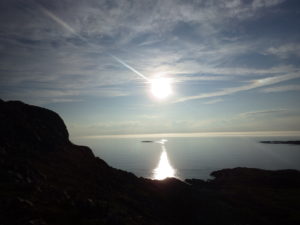
Watching wales in the shadow of Brimstone Head (one of the four corners of the flat earth) on Fogo Island. Photo by Lisa M. Daly.
As a lover of history, heritage and archaeology, I use some of my free time to explore my beautiful province. While this blog focuses on aviation history, I am passionate about all of the history of this province and am always trying to learn more. I am from St. John’s, but married a fellow from Carbonear, have family in Stephenville and in-laws in Clarenville. When we’re not visiting them, we’re exploring every community we can, taking in the local history, visiting museums and just enjoying the coastline. Being able to work as a tour guide allows me to share this passion with others, plus my presentations and talks with local media (see my contributions to aviation archaeology), I get to share the aviation history of Newfoundland and Labrador with everyone.
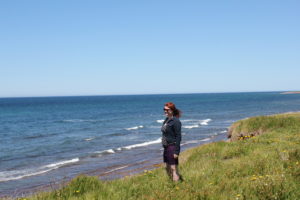
La Grand Terre (Mainland) on the Port-au-Port. Photo by Shannon K. Green.
Of course, there is always a lot to learn, and I love to receive information from those passionate about aviation. I trained as an archaeologist, and learning about aviation came later, so I do rely heavily on those who know more about aircraft and aviation, and try to work with as many interested people as possible.
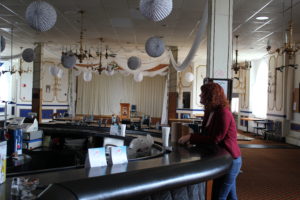
In the Royal Canadian Legion in Stephenville, ordering a whiskey. What is travel without a drink or two? Photo by Shannon K. Green.
Dr. Lisa M. Daly,
Tour Guide, Researcher and Aviation Archaeologist
Diploma in Heritage Resources, Memorial University of Newfoundland
Bachelor of Arts in Physical Anthropology (Archaeology) , Memorial University of Newfoundland
Master of Sciences in Physical and Biological Anthropology, Bournemouth University
Doctor of Philosophy in Archaeology, Memorial University of Newfoundland
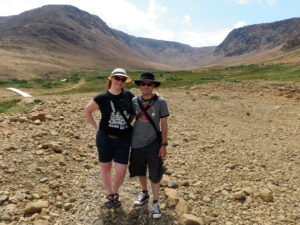
Visiting the Tablelands in Gros Morne National Park.

